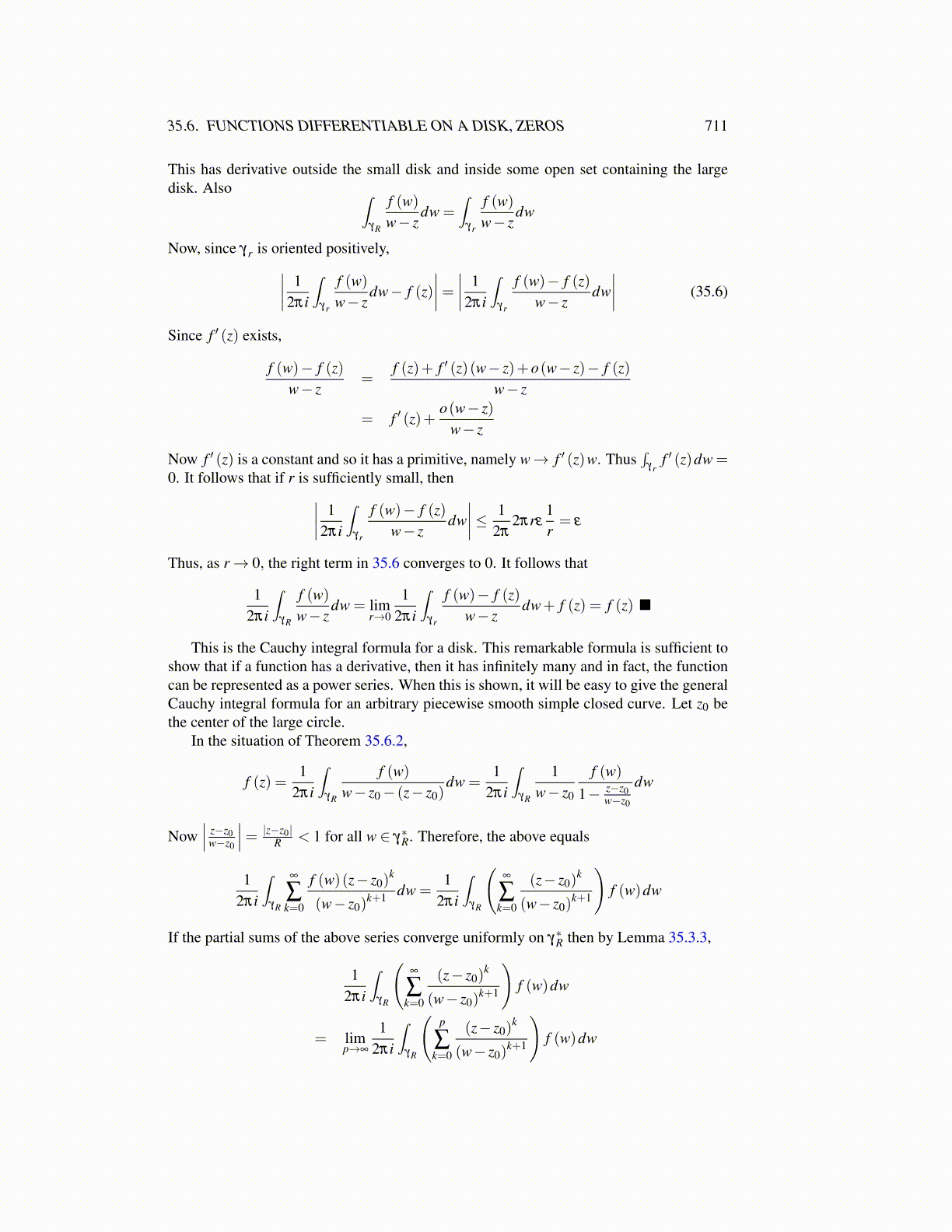
35.6. FUNCTIONS DIFFERENTIABLE ON A DISK, ZEROS 711
This has derivative outside the small disk and inside some open set containing the largedisk. Also ∫
γR
f (w)w− z
dw =∫
γr
f (w)w− z
dw
Now, since γr is oriented positively,∣∣∣∣ 12πi
∫γr
f (w)w− z
dw− f (z)∣∣∣∣= ∣∣∣∣ 1
2πi
∫γr
f (w)− f (z)w− z
dw∣∣∣∣ (35.6)
Since f ′ (z) exists,
f (w)− f (z)w− z
=f (z)+ f ′ (z)(w− z)+o(w− z)− f (z)
w− z
= f ′ (z)+o(w− z)
w− z
Now f ′ (z) is a constant and so it has a primitive, namely w→ f ′ (z)w. Thus∫
γrf ′ (z)dw =
0. It follows that if r is sufficiently small, then∣∣∣∣ 12πi
∫γr
f (w)− f (z)w− z
dw∣∣∣∣≤ 1
2π2πrε
1r= ε
Thus, as r→ 0, the right term in 35.6 converges to 0. It follows that
12πi
∫γR
f (w)w− z
dw = limr→0
12πi
∫γr
f (w)− f (z)w− z
dw+ f (z) = f (z) ■
This is the Cauchy integral formula for a disk. This remarkable formula is sufficient toshow that if a function has a derivative, then it has infinitely many and in fact, the functioncan be represented as a power series. When this is shown, it will be easy to give the generalCauchy integral formula for an arbitrary piecewise smooth simple closed curve. Let z0 bethe center of the large circle.
In the situation of Theorem 35.6.2,
f (z) =1
2πi
∫γR
f (w)w− z0− (z− z0)
dw =1
2πi
∫γR
1w− z0
f (w)1− z−z0
w−z0
dw
Now∣∣∣ z−z0
w−z0
∣∣∣= |z−z0|R < 1 for all w ∈ γ∗R. Therefore, the above equals
12πi
∫γR
∞
∑k=0
f (w)(z− z0)k
(w− z0)k+1 dw =
12πi
∫γR
(∞
∑k=0
(z− z0)k
(w− z0)k+1
)f (w)dw
If the partial sums of the above series converge uniformly on γ∗R then by Lemma 35.3.3,
12πi
∫γR
(∞
∑k=0
(z− z0)k
(w− z0)k+1
)f (w)dw
= limp→∞
12πi
∫γR
(p
∑k=0
(z− z0)k
(w− z0)k+1
)f (w)dw